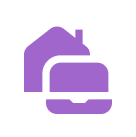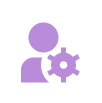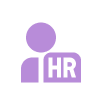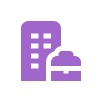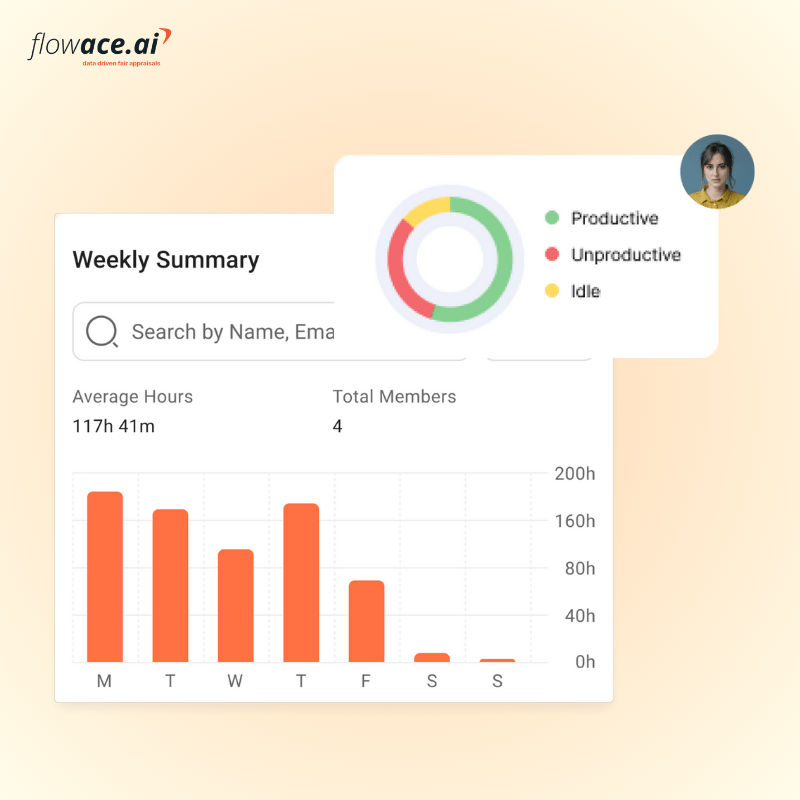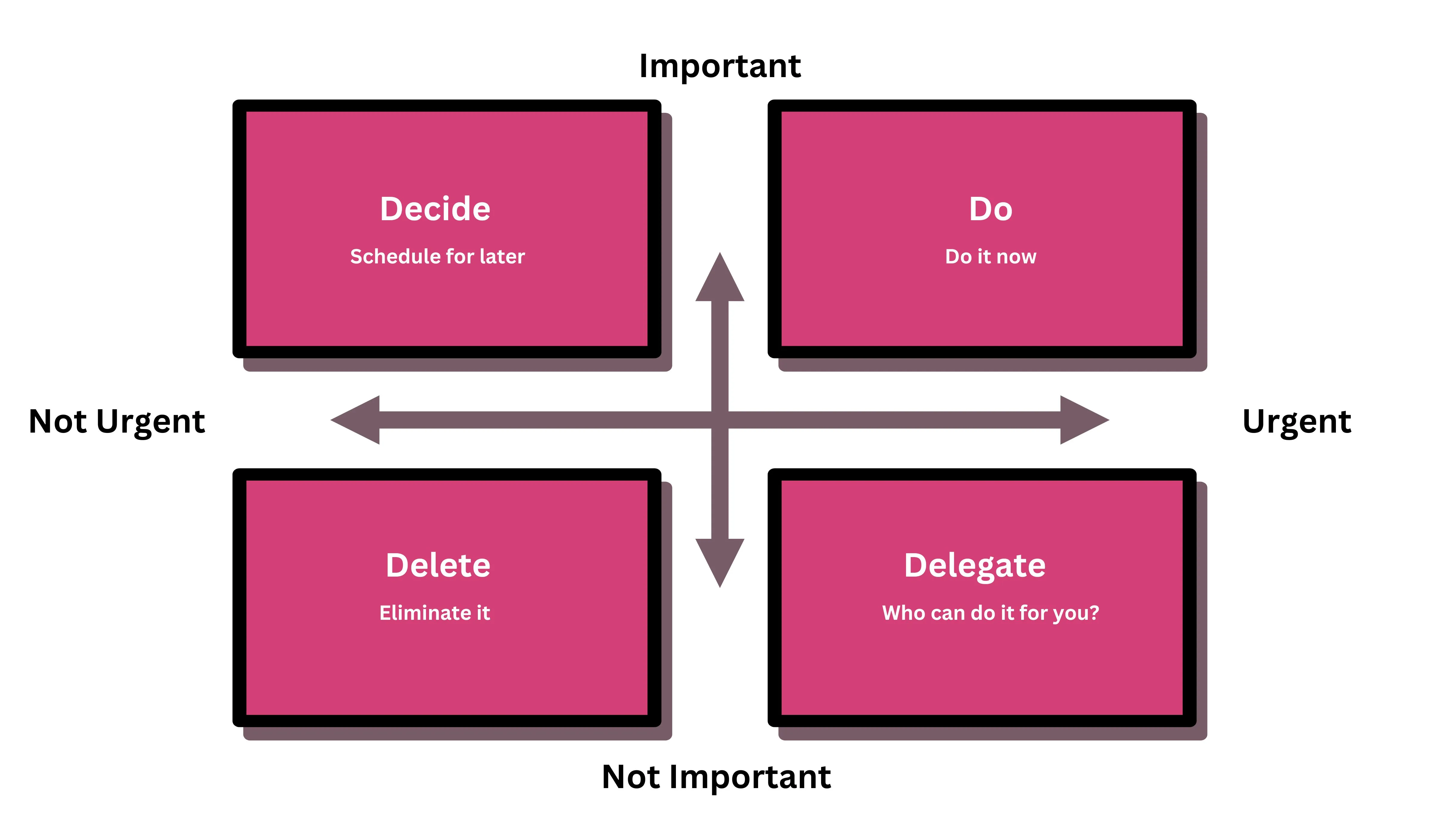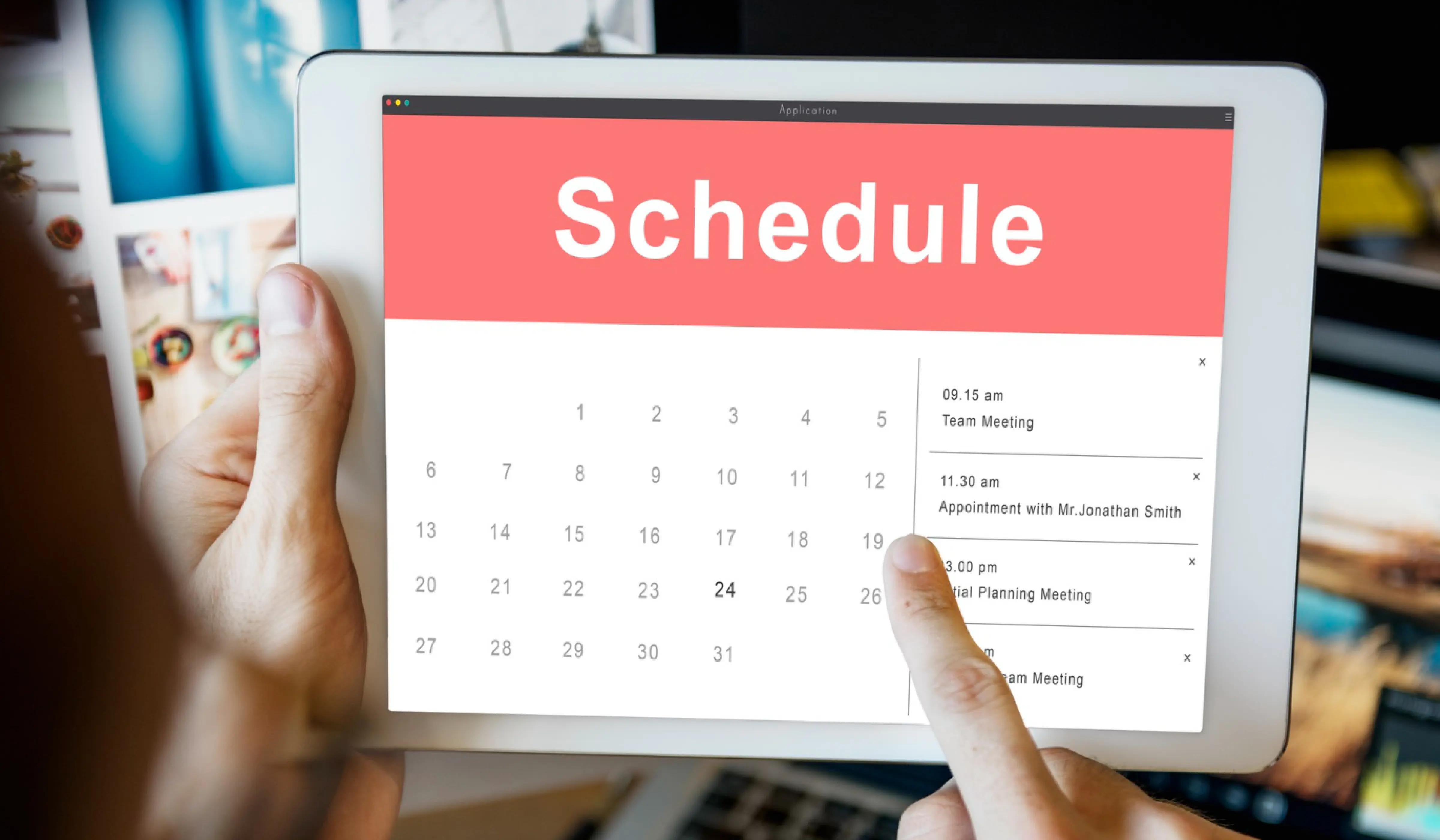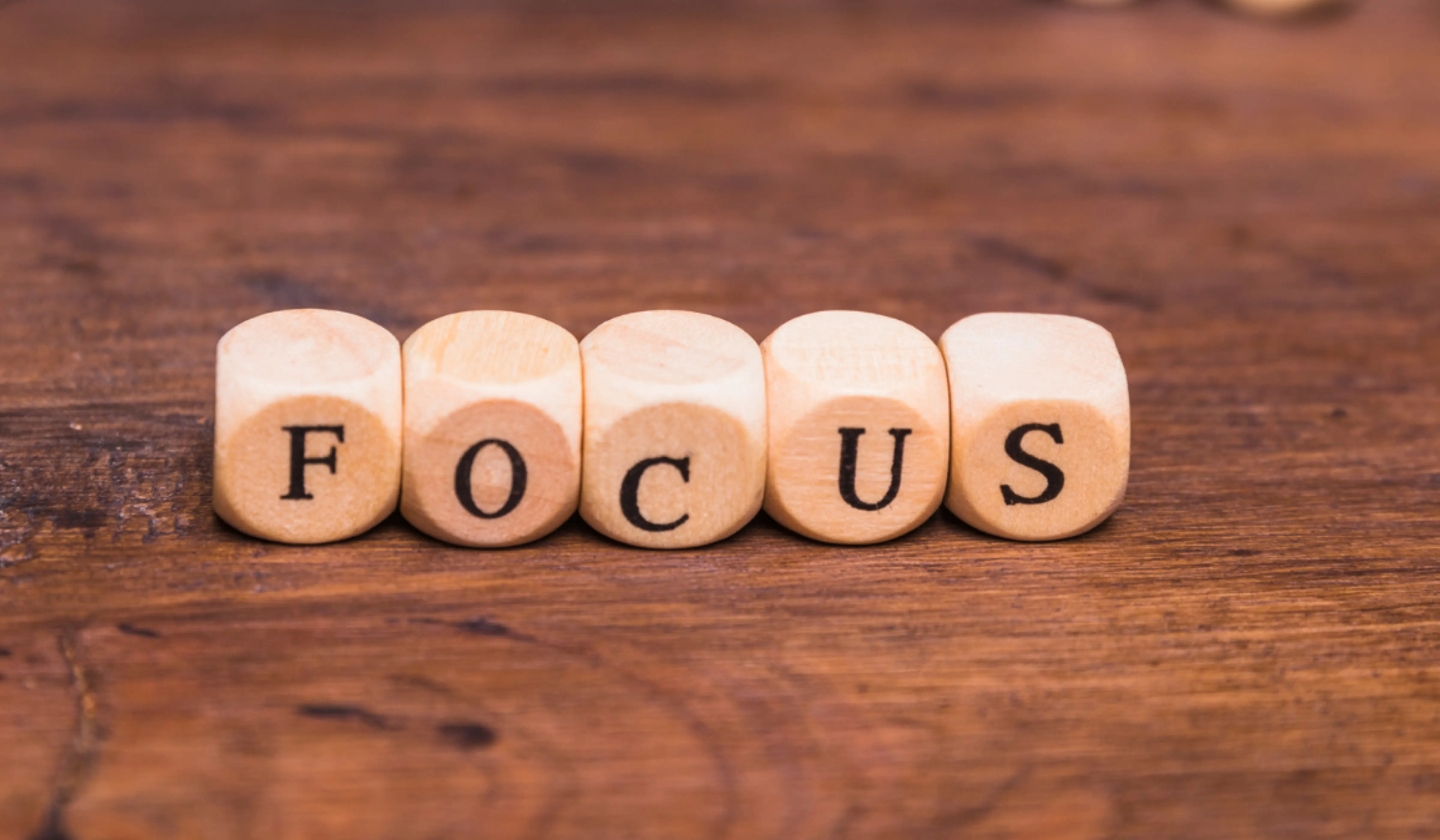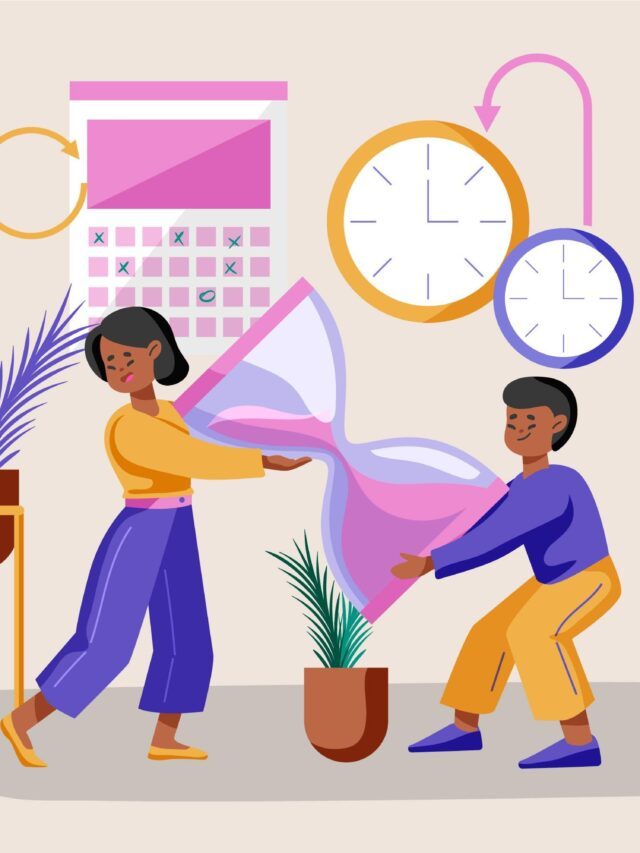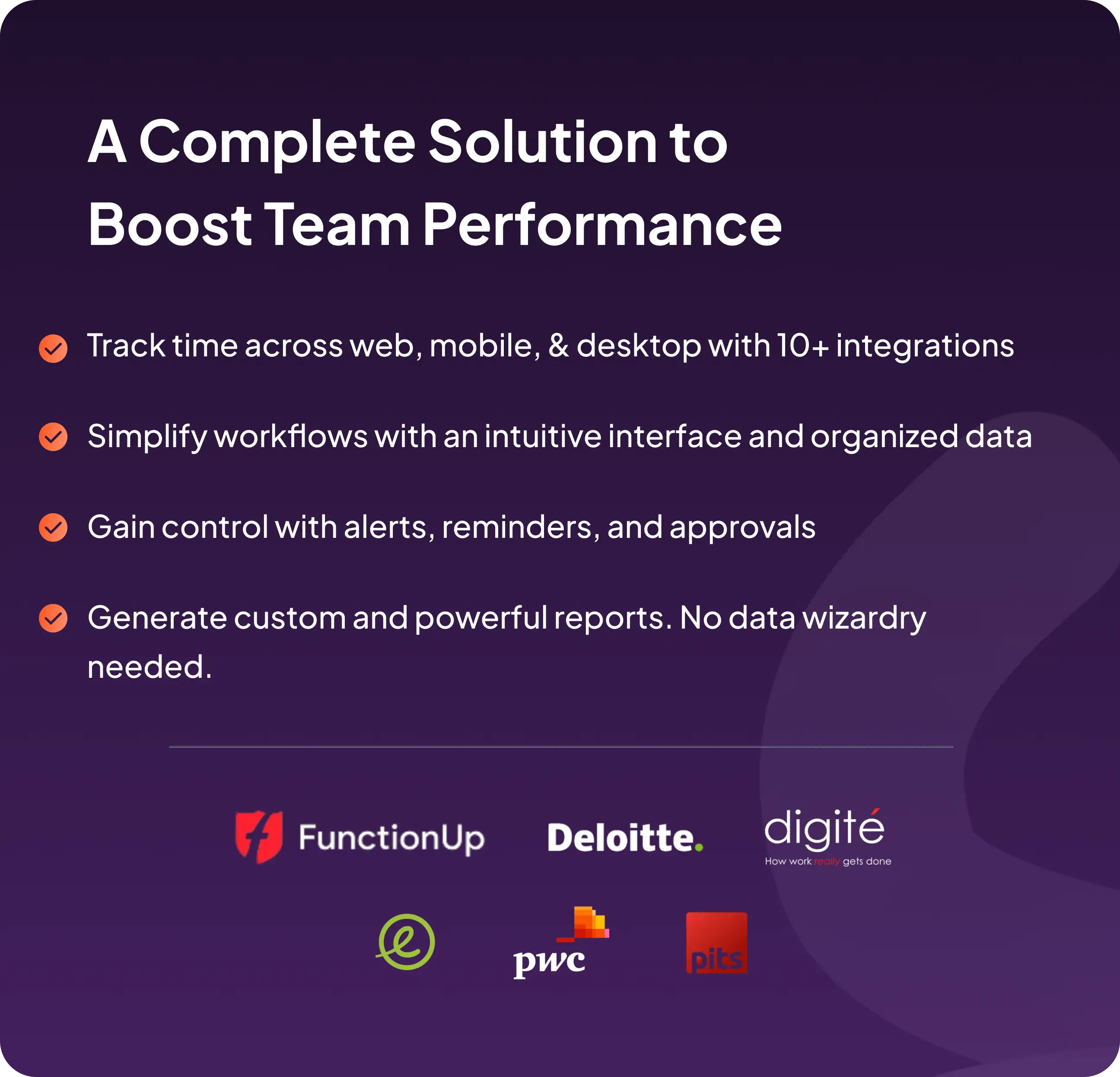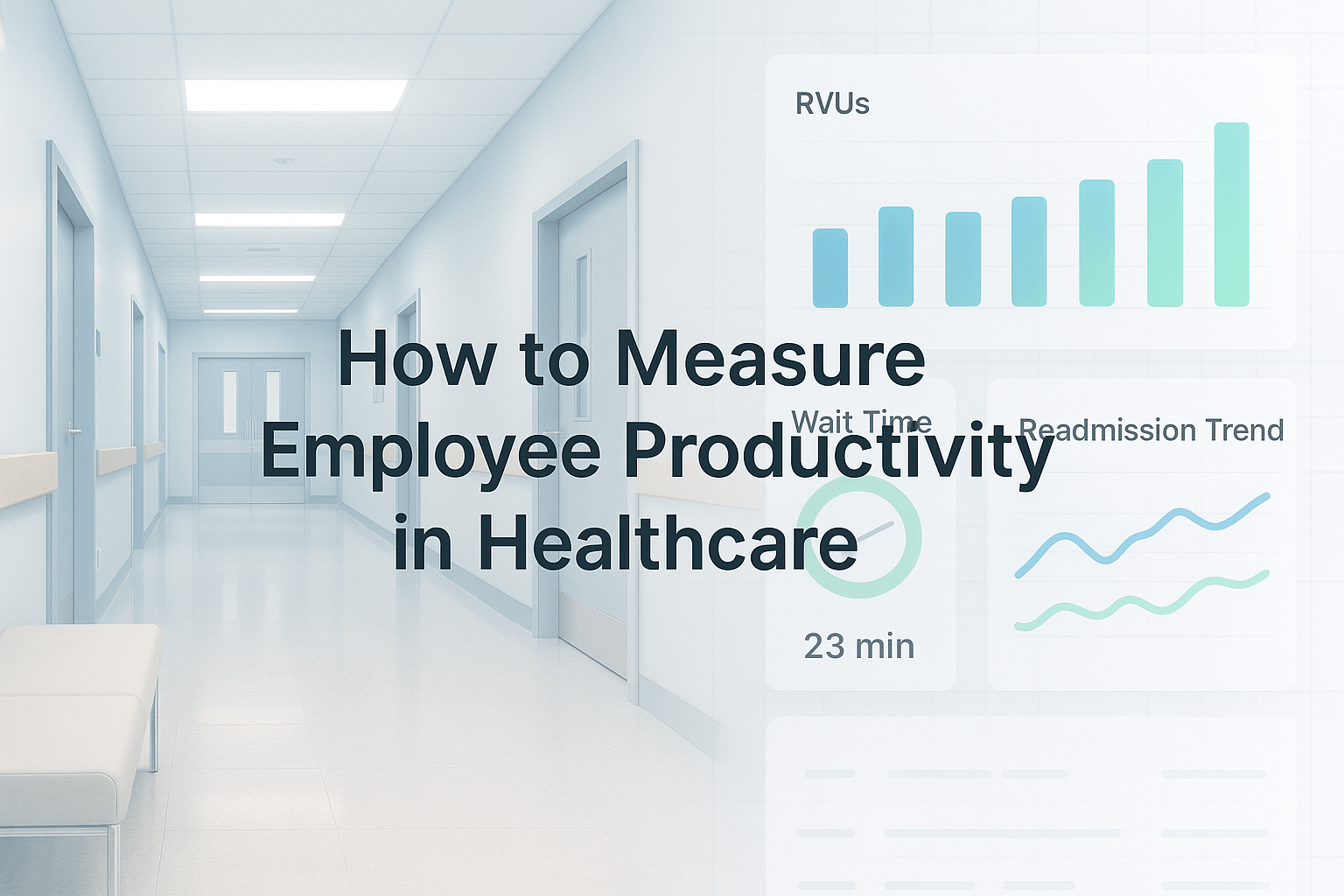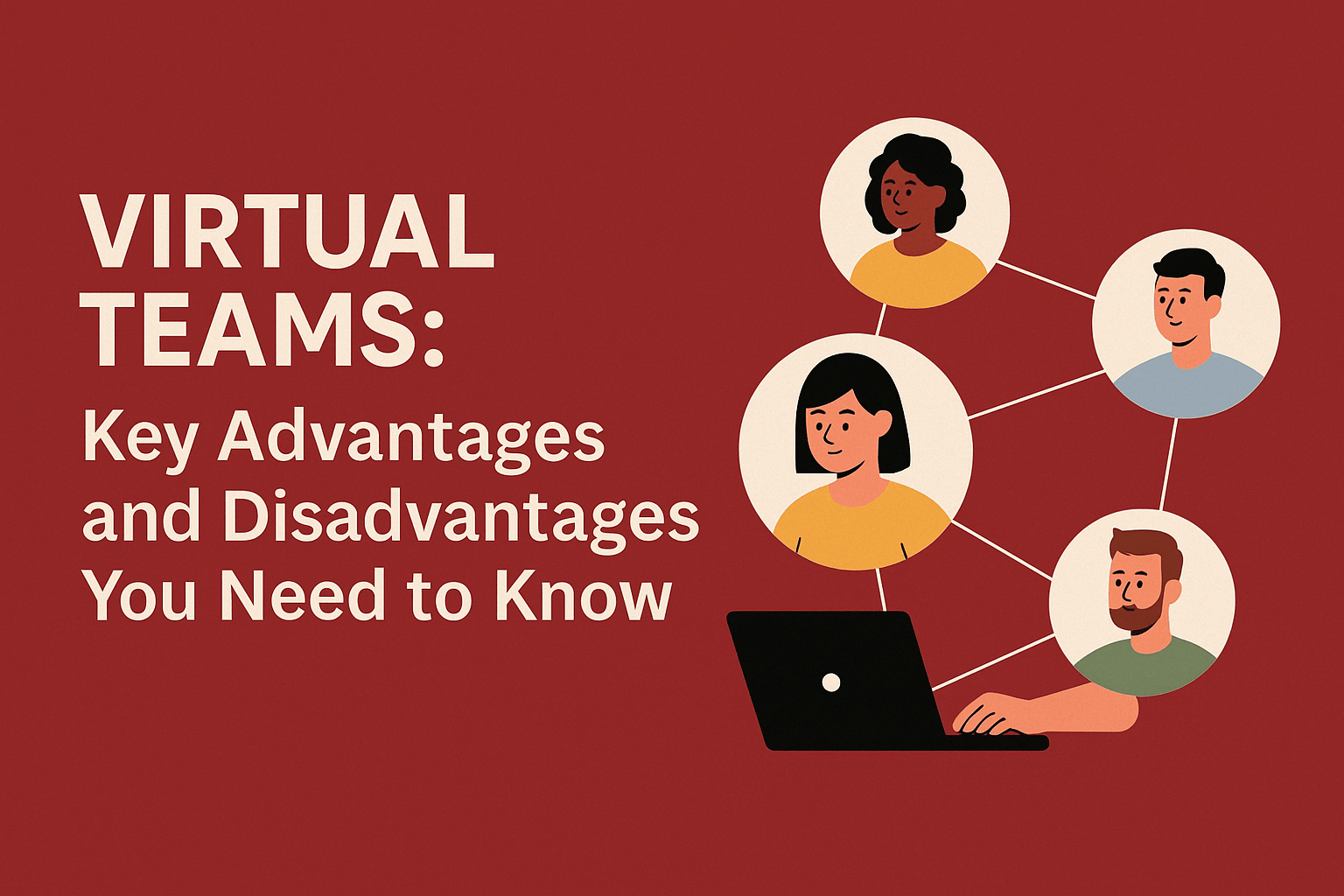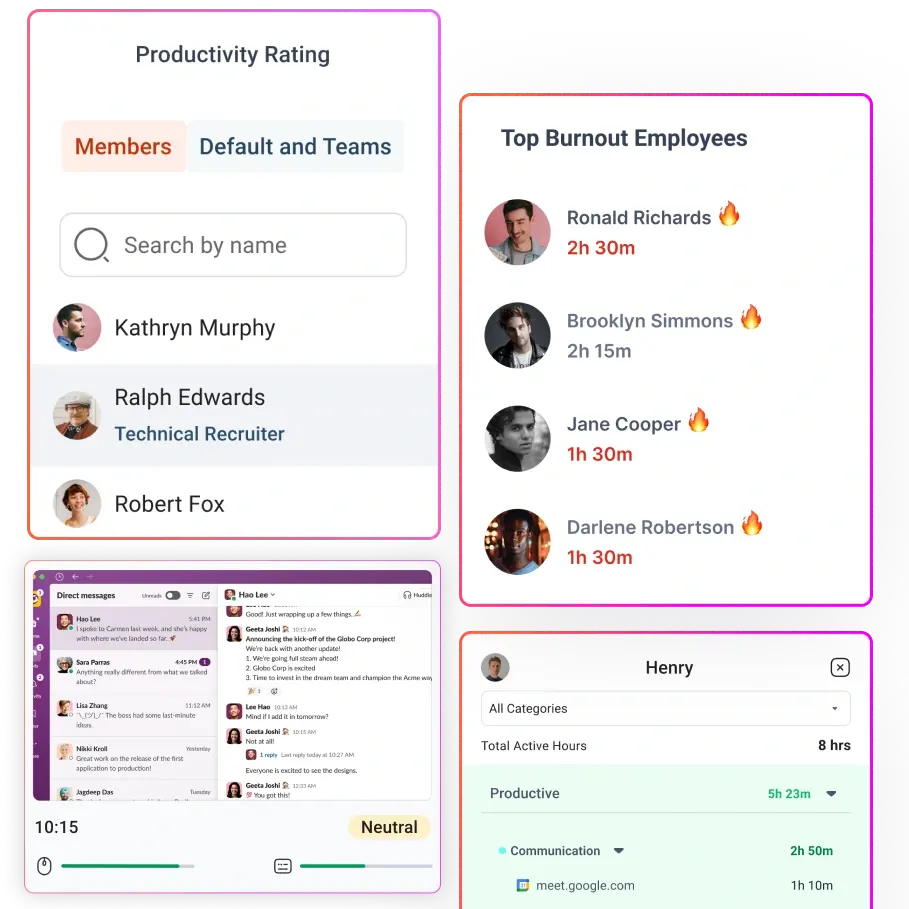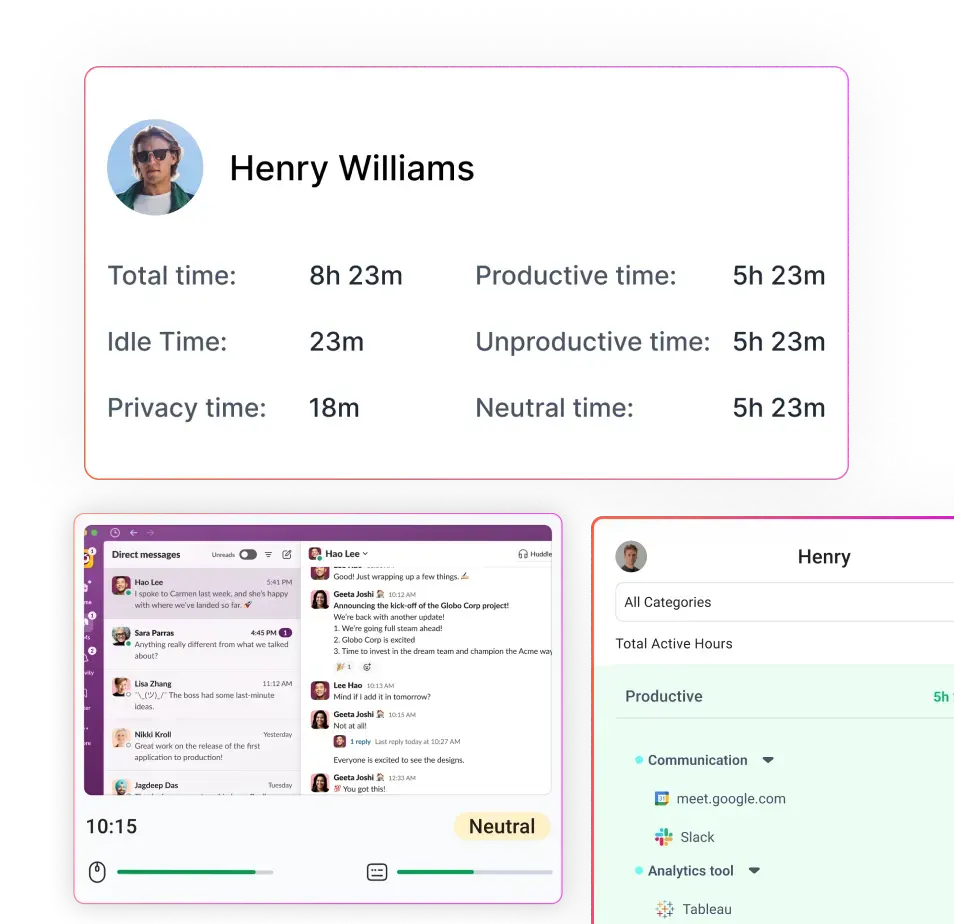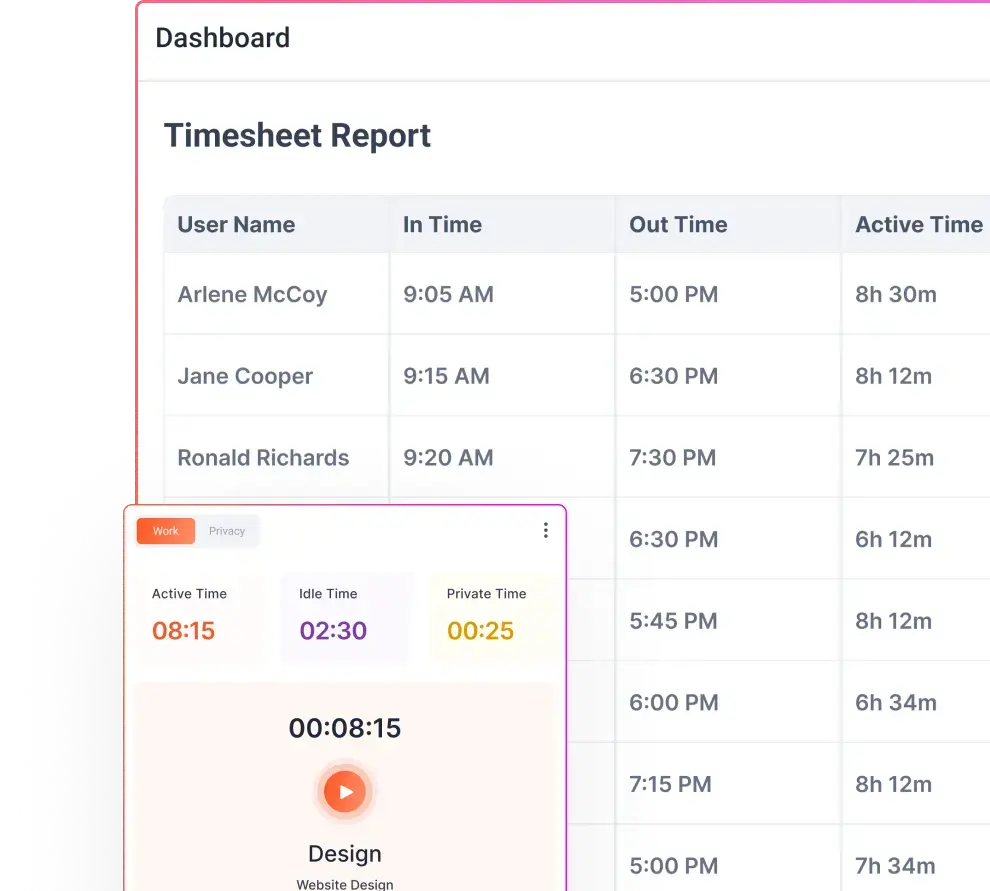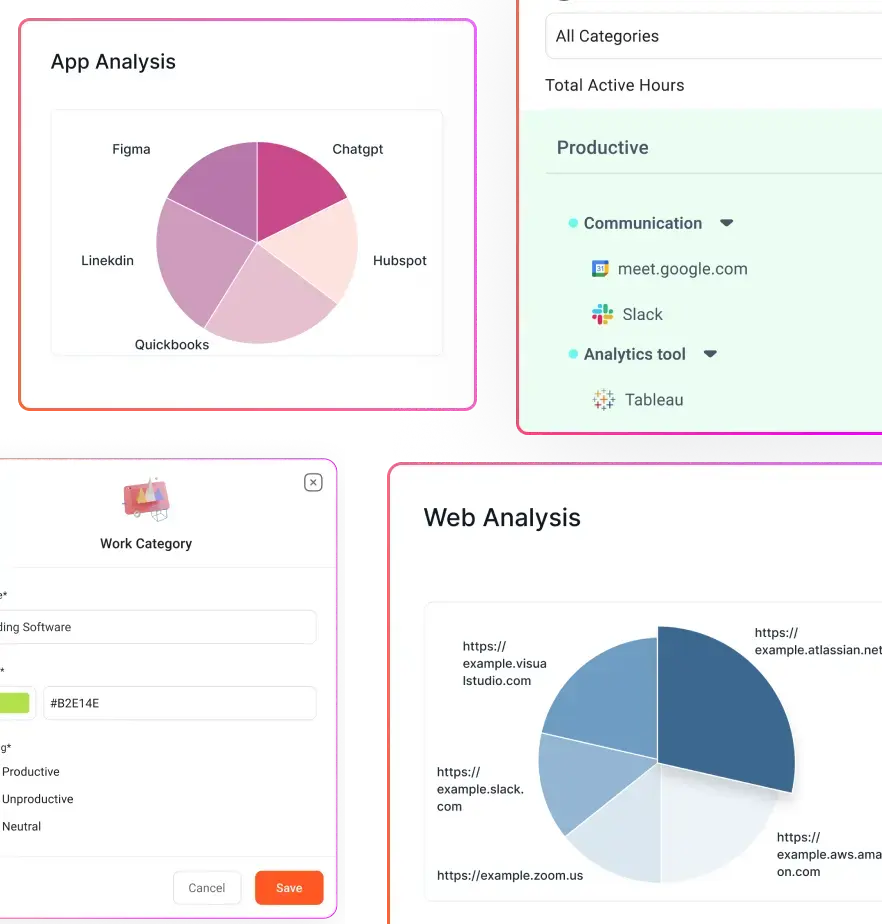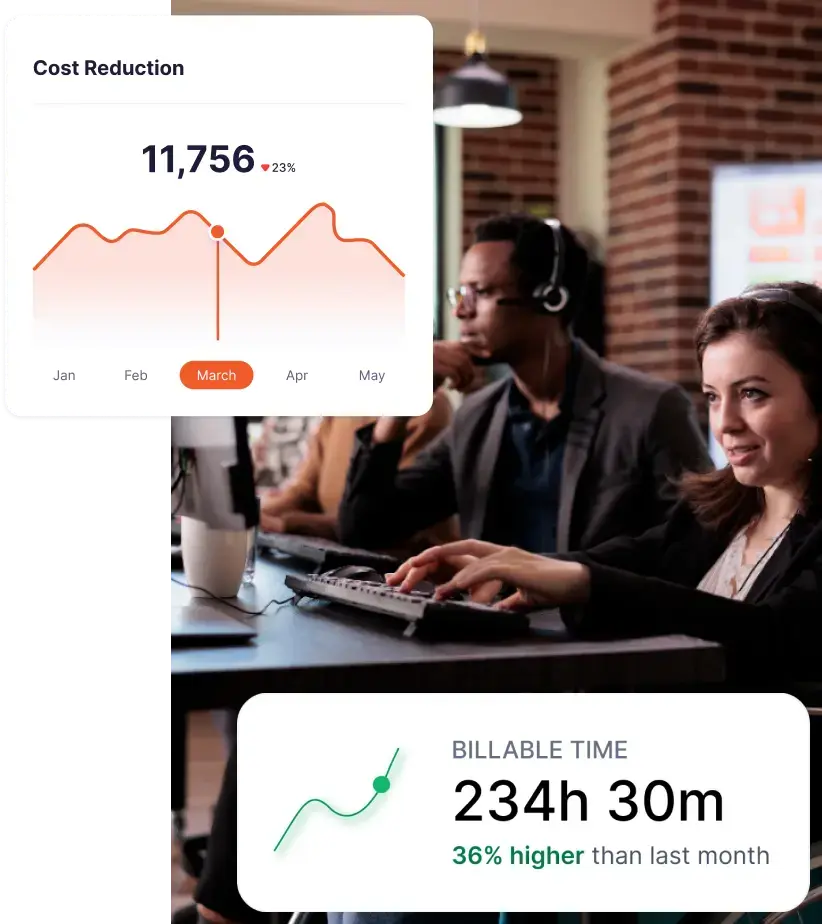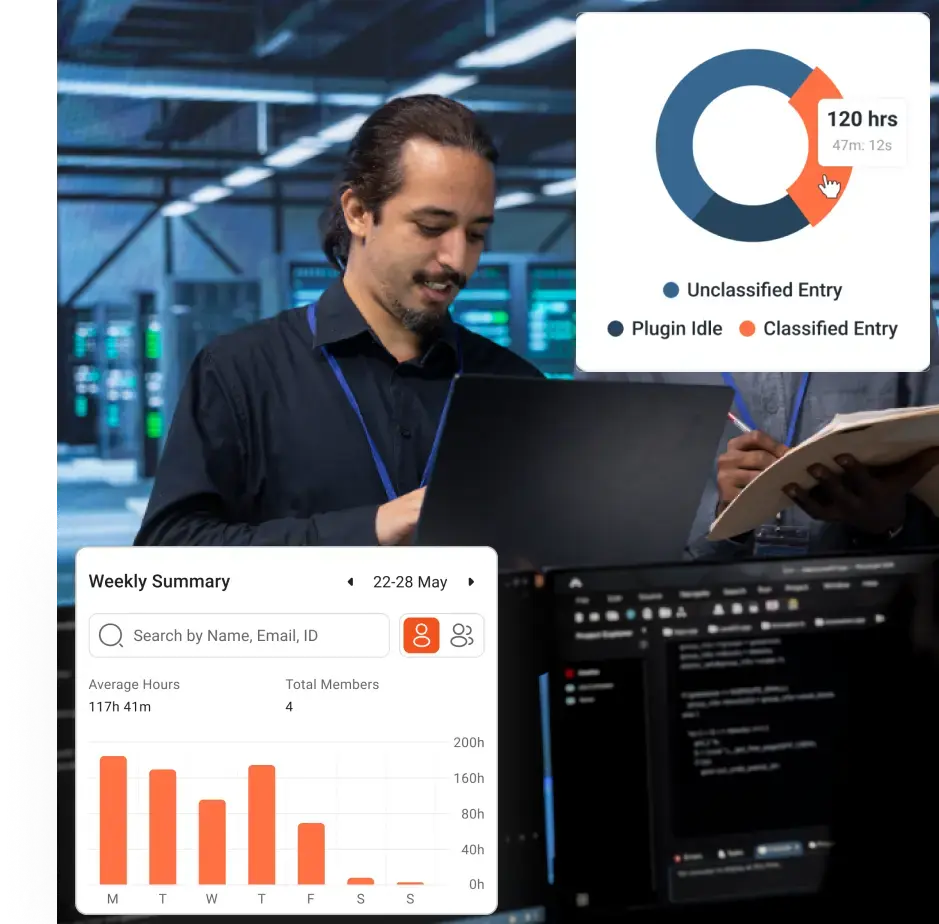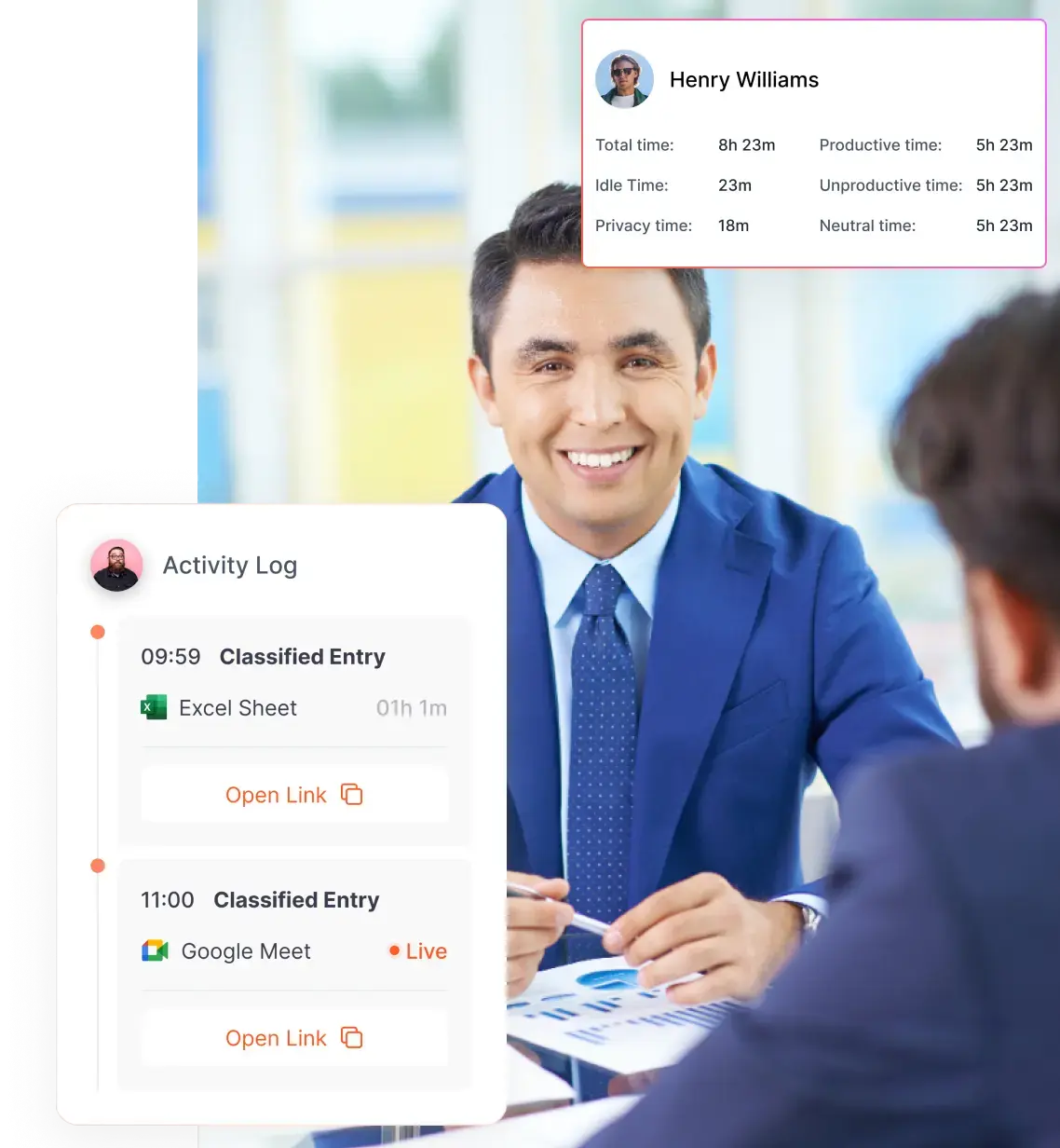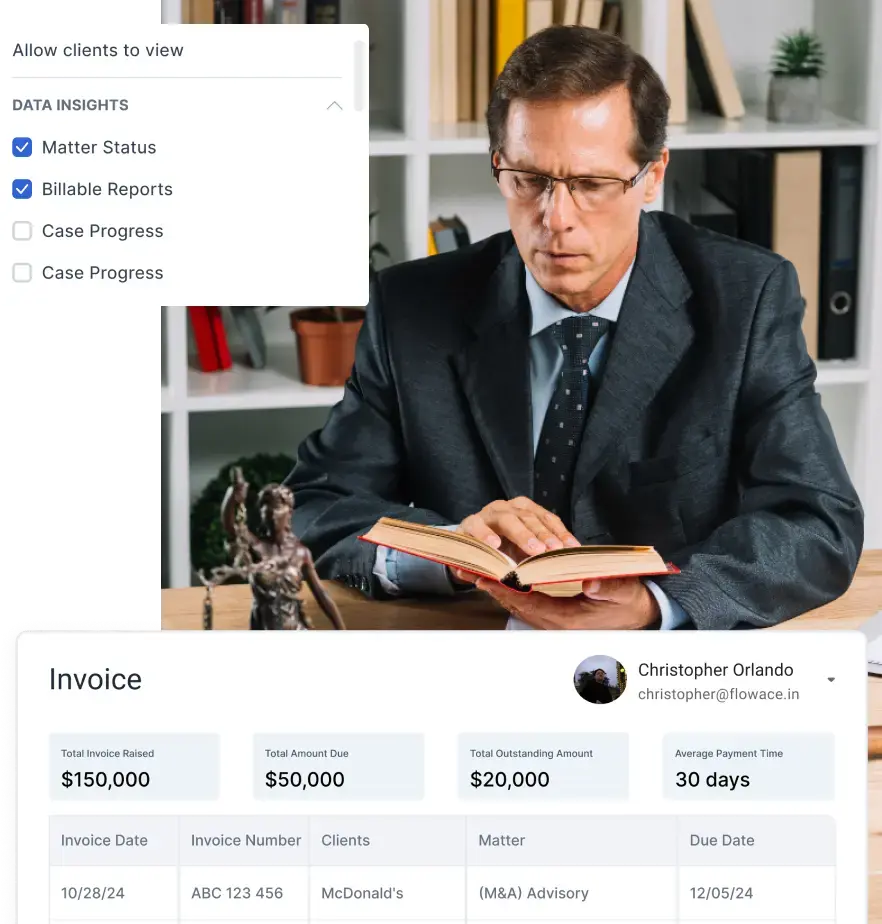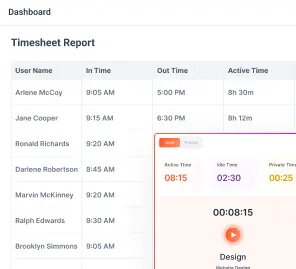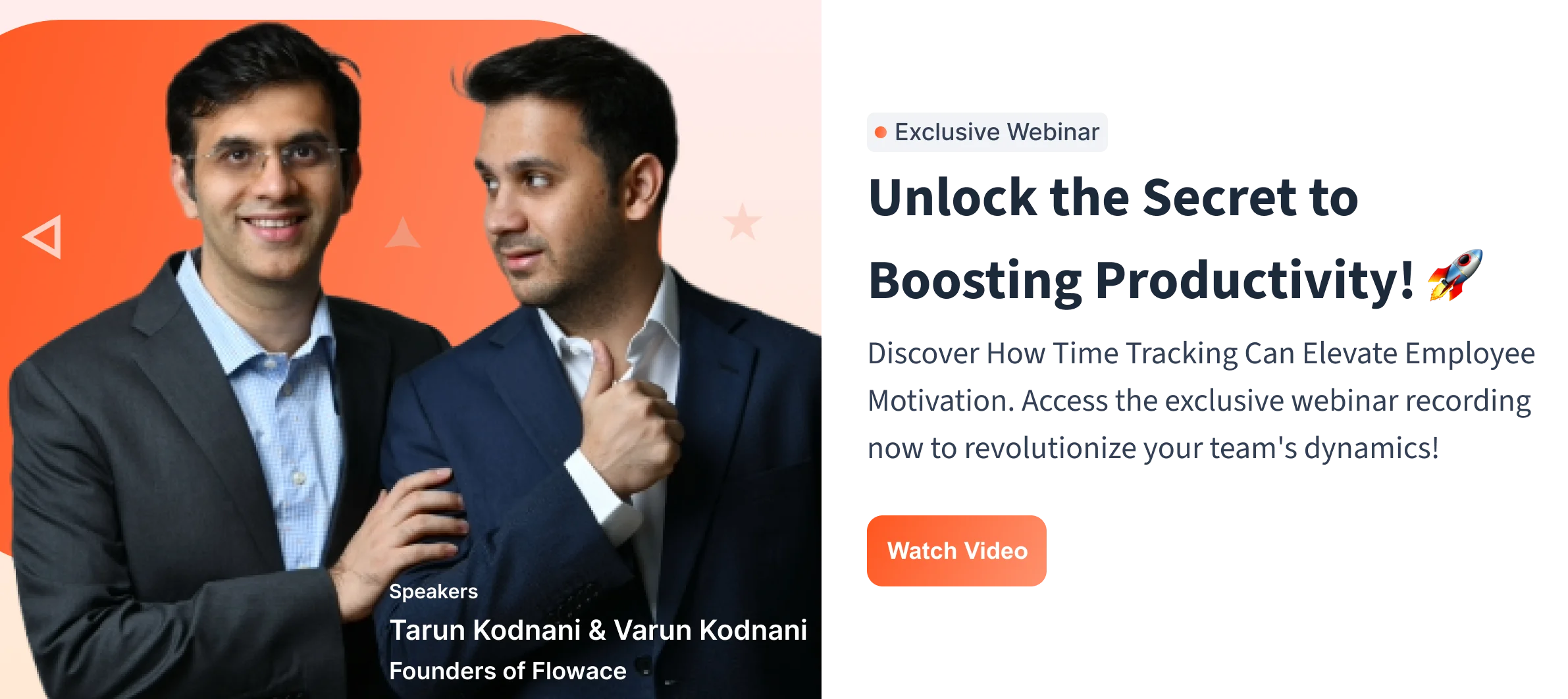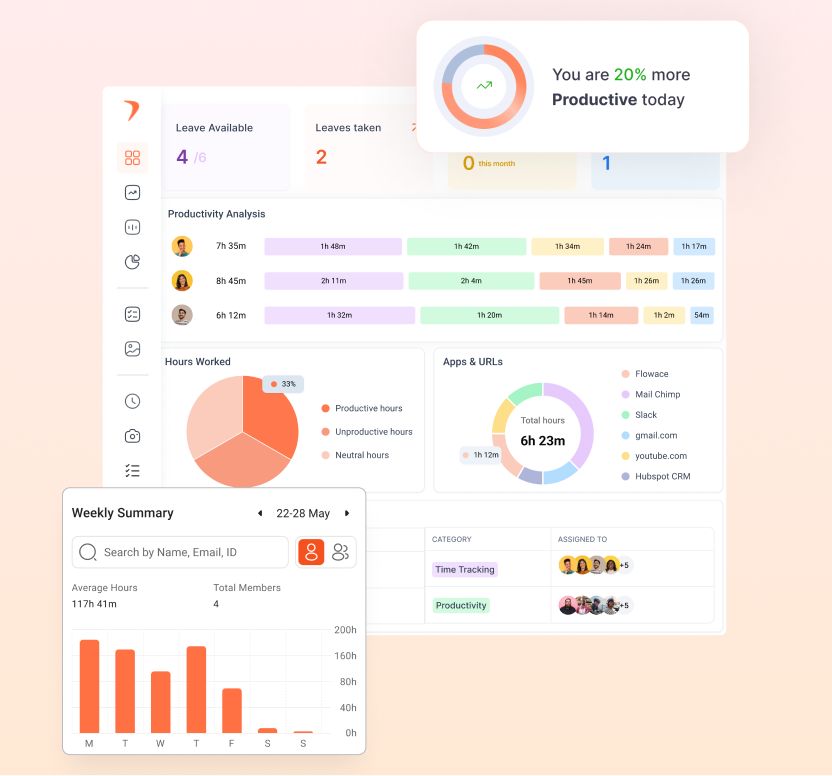“Productivity is never an accident. It is always the result of a commitment to excellence, intelligent planning, and focused effort.” Paul J. Meyer, the author, rightly said this.
Productivity methods are ways to improve and revive your professional creativity and ingenuity.
In the world of work, where the morning starts with Slack or Skype and the day ends with a Zoom call, getting distracted is common. Mastering productivity methods isn’t just about checking boxes on your to-do list; it’s about achieving a sense of accomplishment. Reducing stress and boosting happiness and well-being at work.
So, let’s explore a few productivity methods to boost morale at work.
Key takeaways:
-
Productivity is intentional, not accidental — It stems from consistent commitment, intelligent planning, and deliberate effort, rather than chance.
-
Multiple techniques suit different work styles — From Pomodoro and Time Blocking to Kanban and Zen to Done, there’s no one-size-fits-all; the right approach depends on task type, personality, and workflow.
-
Breaking work into manageable chunks boosts focus — Methods like Pomodoro, task batching, and setting timers help avoid overwhelm and sustain energy levels.
-
Prioritization is essential for effectiveness — Frameworks like the Eisenhower Matrix, Eat That Frog, and SMART goals ensure focus on high-value, impactful tasks.
-
Visual systems and habit-building improve consistency — Tools like Kanban boards, productivity journaling, and “Don’t Break the Chain” create visible progress, motivating sustained effort.
-
Work environment and mindset matter — Enhancing workplace conditions, maintaining focus, and tackling procrastination are as important as time management tools for long-term productivity gains.
How to Choose the Suitable Productivity Method for You?
With so many productivity methods out there—Pomodoro, Kanban, Getting Things Done, Time Blocking—it’s easy to feel like you should be trying them all. But the truth is, the “best” method isn’t the one everyone’s raving about online. It’s the one that feels natural to you, fits your work style, and actually sticks beyond the first week.
Start by looking at the kind of work you do. If your day is filled with small, repetitive tasks, a method like task batching or Kanban might keep things flowing. If your work demands long stretches of deep thinking, you may find that Time Blocking or single-tasking works better than constant short sprints.
Think about your personality too. Are you someone who gets easily distracted? Pomodoro’s short, focused bursts could be a lifesaver. Do you thrive when you’re “in the zone” and hate being interrupted? You might want to skip the timers and instead carve out longer focus periods. If procrastination is your biggest hurdle, “Eat That Frog” can help you tackle that dreaded first task so the rest of the day feels easier.
Your environment matters as well. In a structured, predictable workday, it’s easier to stick to a fixed schedule. But if your job throws curveballs all the time, a more flexible method like GTD or a loose Kanban board will give you room to adapt.
And here’s the most important part—experiment. Pick one approach, try it for a couple of weeks, and pay attention to how you feel. Do you end the day drained or energized? Are you actually getting more done, or just feeling busier? If it’s not working, tweak it, blend it with another method, or ditch it entirely.
The right productivity system isn’t about following rules perfectly—it’s about finding a rhythm you can sustain. Your needs will change over time, and your method should evolve with you. Think of it as your personal toolkit—add, remove, and adjust tools as your work and life shift.
Why is Having a Productivity Method Important?
One moment you’re replying to an urgent email, the next you’re in a meeting, then a colleague pings you with a “quick question” that turns into a 20-minute detour. Without a clear way to organize your time and energy, your day can easily turn into a blur of half-finished tasks and mental exhaustion.
A productivity method acts like a compass in that chaos. It gives structure to your day, helping you decide what to focus on first, what can wait, and what isn’t worth doing at all. Instead of reacting to whatever pops up, you’re making intentional choices about where your time goes. This shift—from reacting to leading—changes everything.
It’s also about mental clarity. When you’re trying to keep all your to-dos in your head, you’re using precious brainpower just to remember what needs doing. A good system (whether it’s a Kanban board, a journal, or a digital task list) takes that burden off your mind. You can focus fully on the task in front of you, knowing the rest is safely captured and will be handled in its time.
Having a method also makes it easier to spot progress. Without one, you might finish the day feeling like you worked non-stop but accomplished nothing concrete. But with a method—especially ones with visible tracking like “Don’t Break the Chain” or Kanban—you can literally see tasks moving forward. That sense of progress isn’t just satisfying; it’s motivating, creating momentum that carries into the next day.
And let’s not forget the emotional side: productivity methods can reduce stress. When you know exactly what you’re doing and when, you feel more in control. Deadlines feel less like threats and more like milestones. Over time, this structure can even help you work fewer hours while achieving more, because you’re not wasting energy on low-priority distractions.
Pomodoro Technique
The Pomodoro Technique is a time‐management tool developed by Francesco Cirillo in the 1980s. Since then, professionals and organizations worldwide have used it to promote productivity. This technique involves splitting work tasks into 25-minute intervals, known as Pomodoros, with breaks scheduled between intervals.
The Pomodoro Technique is a productivity method that involves the following assertive steps:
- Take a task that needs to be completed
- Set your timer for 25 minutes
- Work on the task without distractions for 25 minutes
- Stop working when the timer goes off and mark a check on the task list
- If you have under four checkmarks, take a 3-5 minute break and then return to work. If you complete the task, start again from step 1 and move on to the next task
- After completing four 25-minute intervals—which means you have marked four checkmarks—take a longer break of 15-20 minutes to recharge and prepare for the next set of tasks
Pros
- This technique can help you stay focused on the task at hand by breaking down work into smaller chunks to avoid getting overwhelmed
- Short bursts of work followed by short breaks can help you maintain your energy levels and avoid burnout, ultimately leading to increased productivity
- It can help you break down large, daunting tasks into smaller, more manageable ones. This can make it easier to get started and avoid procrastination
Cons
- Not all tasks are created equal. Some tasks, such as creative brainstorming, may benefit from more prolonged, uninterrupted time
- It can be inflexible for some people. If you find yourself getting into a good flow state, it can be frustrating to be interrupted by the timer
- The 5-minute breaks prescribed by the Pomodoro Technique may require more time to fully recharge for complex tasks
Boost by 31% using the innovative solution by Flowace!
Get Started for FreeDwight D. Eisenhower’s Method
The Eisenhower Matrix, often known as the Eisenhower Box or approach, is an easy strategy for prioritizing tasks and managing a job load. It bears the name of Dwight D. Eisenhower, the 34th President of the United States and a five-star general in World War II.
This approach helps you organize jobs based on urgency and importance, allowing you to prioritize your most critical work successfully. You can assess the urgency of tasks and select the best course of action by allocating them to one of the following four quadrants:
- Square 1: Do First! These are important tasks with a looming deadline (like fixing a flat tire before work).
- Square 2: Schedule It! These are important tasks but not urgent (like planning a vacation). Put them on your calendar.
- Square 3: Delegate It! These tasks are urgent but unimportant (like answering a non-urgent email). Can someone else handle it?
- Square 4: Skip It! These tasks are neither important nor urgent (like organizing old magazines). Ditch them!
Pros
- You can quickly identify what needs your immediate attention and what can be delegated or scheduled for later. By separating tasks into urgent/important and not urgent/not important categories
- It lets you focus on essential tasks first and helps you avoid feeling overwhelmed and burnt out by a long to-do list
- The matrix encourages you to analyze whether a task is urgent or feels that way, leading to better time management choices
Cons
- It only considers urgency and importance, neglecting factors like complexity or time needed
- Deciding what’s urgent and vital can be subjective, requiring careful evaluation of each task
- The effectiveness of the matrix depends on keeping it updated as priorities shift
Getting Things Done
Eat The Frog is a productivity method created by Brian Tracy and introduced in his book “21 Great Ways to Stop Procrastinating.” This technique involves prioritizing your work by identifying the most important and impactful task, which is called “the frog.”
The idea is to complete this challenging task first thing in the morning, increasing productivity.
The Eat That Frog strategy is based on the 80/20 rule, which suggests focusing on the top 20% of one’s to-do list, where the most essential tasks lie. You can achieve maximum productivity by prioritizing these tasks and completing them first.
Pros
- It helps tackle your most important task first, giving you a sense of accomplishment for the rest of the day
- Finishing a big, challenging task early gives you confidence and motivation to keep going
- This technique prevents procrastination throughout the day
Cons
- Starting your day with a difficult task can be draining, especially if you’re not a morning person
- Unexpected tasks might pop up throughout the day, throwing off your “frog-eating” schedule
- Creative or complex tasks benefit from more prolonged stretches of uninterrupted time
Time Blocking
Time blocking is a highly effective time management technique that involves planning your schedule for the day in advance by allocating specific tasks and responsibilities to every hour of your day. This method is also known as “monotasking” or “time chunking.”
Time blocking allows an off-period time to complete a particular task. You can make your to-do list more manageable, prioritize your tasks, and gain more control over your day.
It also helps to improve focus, increase productivity, and deter procrastination. So that, at the end of the day, you will feel a sense of accomplishment after completing all your tasks.
Pros
- Blocking out dedicated time slots for specific tasks minimizes distractions
- Focused work periods lead to more accomplishments in less time, giving you a sense of achievement
- Knowing exactly when and for how long you’ll tackle a task makes it harder to put it off, minimizing procrastination
Cons
- Unexpected events or tasks can throw off your carefully planned schedule, potentially causing stress
- Underestimating the time needed for tasks can lead to missed deadlines and frustration when your blocks become too rigid
- Some tasks, like brainstorming, might benefit from more spontaneous bursts of energy, which time blocking might restrict
Getting Things Done
David Allen proposed the Getting Things Done organizational schema, also known as GTD, in his book Getting Things Done: The Art of Stress-Free Productivity. Allen’s proposal uses this mechanism, which is simple but highly effective.
David Allen said that keeping or preserving that knowledge about forthcoming commitments and tasks consumes a lot of valuable mental space and causes unnecessary stress.
The GTD method gets things done in 5 steps:
- Capture: Write down everything on your mind.
- Clarify: Decide what to do with each task (do, delegate, ditch).
- Organize: Put tasks in lists based on importance and urgency.
- Reflect: Regularly review your lists to stay on top of things.
- Engage: Do the work!
Pros
- It reduces stress and helps clear the mind.
- It improves focus and prioritization by organizing tasks by importance and context, letting you know what to finish first.
- Breaking down large tasks and having a clear plan helps you become more productive.
Cons
- Setting up and maintaining GTD systems can be time-consuming, especially initially. The method itself has multiple steps
- It can lead you to overthink tasks at the “clarify” stage, causing decision fatigue and delaying action
- GTD might not suit everyone’s work style
Boost by 31% using the innovative solution by Flowace!
Get Started for FreeKanban

Kanban is a simple system for creating products through continuous deliveries. Originally a Japanese technique, it can be applied to achieve better work, business, or personal results.
The Kanban productivity system employs a Kanban board to track, organize, and visualize project workflow and tasks. The visualization process of Kanban enables teams to understand the project’s progress and task status clearly.
Kanban boards are typically divided into columns that indicate task status and progression. The three most common Kanban statuses are:
- To-Do
- In Progress
- Complete
Kanban cards display relevant information about the task and what needs to be implemented.
Pros
- A Kanban board clearly shows the status of tasks, helping everyone understand where things stand and identify bottlenecks
- Limiting the number of tasks in progress (WIP) reduces multitasking and encourages focusing on one task at a time, increasing efficiency
- Kanban is easily adaptable to changing priorities. New tasks can be added readily, and workflows can be adjusted as needed
Cons
- Maintaining an effective Kanban board requires discipline to track tasks and adjust WIP limits
- Kanban is best suited for ongoing workflows with repetitive tasks. It might not be ideal for complex projects with unique requirements
- Implementing Kanban initially requires setting up the board, defining workflows, and training team members
The Chain Technique
Don’t Break the Chain is a productivity method that keeps a visual record of successive days when a task or activity is done successfully.
Jerry Seinfeld has popularized this approach. As an aspiring comic, he needed to develop his standup routine and continuously develop new content.
The goal is to build a chain of successful days by constantly engaging in the desired behavior without taking breaks. This productivity strategy is frequently used to form new habits, break undesirable ones like smoking, and achieve goals.
The “Don’t Break the Chain” method is effective but demands commitment and willpower.
Pros
- Seeing a growing chain of completed tasks can be highly motivating. It reinforces the positive behavior and makes you want to keep the streak going
- The method encourages daily engagement with your desired habit, which is key to forming lasting habits
- The visual system with marks on a calendar is clear and easy to understand. It requires minimal effort to keep track of your progress
Cons
- Missing a day can be a significant setback, potentially leading to discouragement and abandoning the effort altogether
- The method treats all tasks equally, regardless of difficulty. A missed day due to unforeseen circumstances can feel unfair
- It is most effective for establishing simple habits. It might not be suitable for complex tasks with varying completion times
Single-Tasking Method
Reducing multitasking minimizes overstimulating the brain.
Single-tasking entails completing one task at a time with as few distractions and interruptions as feasible. It allows one to focus on one activity at a time and complete it before moving on to the next. Hence, it increases productivity but is more difficult to achieve and sustain over time.
Single-tasking increases your attention span and mental muscles. It puts you in a flow state, completely immersed in your job. As a result, you may perform better, generate your finest work, and finish the assignment more quickly.
Pros
- Single-tasking allows for deep concentration, leading to higher-quality work with fewer errors.
- Eliminating the juggling act of multiple tasks reduces cognitive overload and mental fatigue.
- Focusing on one thing at a time can help you complete tasks faster and avoid the time-consuming mental switching.
Cons
- It can be inflexible in fast-paced environments with unexpected interruptions or quick tasks that could be done during downtime.
- There might be small waiting periods within a task where you could tackle simpler tasks, potentially leading to wasted time.
- One could benefit from multitasking activities while monitoring or waiting for information.
Task batching
Task batching is a productivity method in which similar tasks are grouped together and completed simultaneously. For example, instead of checking your email every hour, you dedicate a specific block to processing all your emails simultaneously.
Basically, task batching focuses on doing similar kinds of work during a block to avoid switching between different types of tasks and using up cognitive energy. This approach minimizes the time and mental energy spent switching between other tasks.
Pros
- Our brains take time to adjust between different tasks. Batching similar tasks minimizes this context switching, leading to improved focus and efficiency.
- Once you’re in the zone for a particular type of task, you can leverage that momentum to complete similar tasks more efficiently.
- Grouping similar tasks can make them seem less daunting, potentially helping you overcome delays at work.
Cons
- Batching might not be suitable for urgent tasks or situations requiring immediate attention.
- Spending a long time on similar tasks could lead to mental fatigue and burnout.
- Creative tasks benefit from spontaneous bursts of inspiration, which batching could hinder.
Zen to Done
Zen to Done is a habit-building technique to enhance productivity.
Zen To Done is a productivity system that emphasizes simplicity and focuses on doing tasks in the present moment. Unlike other systems, such as Getting Things Done or GTD, ZTD prioritizes habit changes and practicality.
It encourages simplification and provides a simple structure for users to follow. If you have been struggling with GTD, ZTD may be the solution you need.
Pros
- ZTD breaks down GTD’s many steps into a more manageable set of habits, making it easier to adopt and maintain.
- ZTD emphasizes getting things done rather than just capturing and organizing tasks, promoting action and progress.
- This method incorporates Zen principles, encouraging a present-focused and less stressful approach to task management.
Cons
- ZTD’s lack of detailed structure may feel overwhelming or unclear, especially when dealing with complex projects.
- The success of ZTD relies on building habits and consistently practicing them, which requires discipline and ongoing effort.
- Those who thrive on detailed planning and organization might find ZTD’s minimalist approach needs to be revised for their needs
Productivity Journaling
Productivity journals are journals that document your productivity. It involves using a journal to track your tasks, goals, and progress.
A productivity diary is a time tracker and a journal in which you record observations on all factors influencing your productivity time. With this technique, each time you complete a task, you document that information wherever you want.
There are numerous ways to journal, but there are no predefined rules or guidelines. However, keeping track of your work schedule can benefit future professional growth.
Pros
- Writing down your tasks helps you clarify your priorities and identify areas for improvement.
- Journaling your goals and progress creates a sense of accountability, keeping you motivated to stay on track.
- Reviewing your journal entries allows you to identify patterns, troubleshoot issues, and reflect on what’s working (or not) in your workflow.
Cons
- Creating and maintaining an effective productivity journal takes time and effort, which can be a barrier for some.
- Focusing too much on journaling can lead to overthinking and analysis paralysis, hindering action.
- Journaling is a tool, not a solution.
SMART goals
SMART stands for Specific, Measurable, Achievable, Realistic, and Timely. The SMART goal method is a technique for setting personal and professional objectives.
A SMART goal helps give you an objective. This also allows you to identify strengths and weaknesses. Moreover, when you know your goals, you’ll want to meet them by overcoming any obstacle.
Well, it can be challenging and might force you out of your comfort zone. But ultimately, it is a valuable tool for remaining focused and productive throughout the process.
Pros
- SMART goals clearly define what you want to achieve (Specific), how you’ll measure progress (Measurable), and by when (Time-bound). This clarity keeps you focused and prevents you from feeling overwhelmed by vague aspirations.
- They are Achievable and Relevant. Ensuring your goals are realistic and relevant to your larger objectives makes you more likely to stay motivated and achieve them
- You can easily communicate your goals to others (colleagues, managers, etc.) The clear structure helps ensure everyone understands your aim and fosters better alignment and collaboration.
Cons
- The focus on specifics might stifle creativity and out-of-the-box thinking.
- While SMART goals encourage achievable goals, overly ambitious goals might seem daunting. The emphasis on measurability might discourage setting goals.
- Complex goals with multiple moving parts might not translate well into the SMART format.
The Action Method
Scott Belsky developed the action method to tackle the challenges of project management and productivity. In his 2010 book Making Ideas Happen: Overcoming the Obstacles Between Vision and Reality, he laid out the method.
Belsky’s motive was to create a system that captures ideas and tasks and provides a framework for effectively executing actionable items. The Action Method, also known as the PARA method (Projects, Areas of Focus, Resources, and Archives), is a productivity system for managing tasks and information.
This method suits anyone looking for a systematic approach to managing tasks, projects, and responsibilities. It offers a versatile framework for enhancing productivity and achieving results.
Pros
- This method provides a clear structure to categorize tasks, projects, and information. It helps you stay organized, avoid information overload, and know where to find necessary things.
- By separating projects from areas of focus and resources from archives, you can prioritize actions effectively.
- This method can be adapted to different workflows and personal preferences. You can choose the level of detail that works best for you and adjust the categories as needed.
Cons
- Setting up this method can take time and effort, especially if you have a large backlog of tasks and information.
- Learning the system and consistently maintaining your PARA lists requires ongoing effort and discipline.
- It might not be ideal for those who prefer a more intuitive or free-flowing approach to task management.
Creating Calendar Blocks
Calendar blocking is a time management technique that divides your workday into designated time slots for specific tasks. Following these techniques helps get your to-do list to get its dedicated block in your calendar, promoting focus, efficiency, and a sense of control over your schedule.
Calendar blocking offers a strategic approach to time management, boosting focus, productivity, and overall well-being. However, it’s crucial to consider your work style and the nature of your tasks when using this method.
Pros
- Block out distractions and get things done faster with dedicated work periods.
- Knowing what’s next keeps you on track and avoids procrastination.
- A clear plan reduces the mental burden of juggling multiple tasks.
Cons
- Unexpected events can throw off your schedule and cause stress.
- Underestimating task time can lead to missed deadlines.
- The structure might not be ideal for tasks that thrive on free-flowing ideas.
Effective Planning
Effective planning is a key component of productivity. This technique involves deliberate thinking and organizing tasks, resources, and schedules to attain desired results efficiently.
Effective planning helps break down large goals into concrete tasks, set realistic deadlines, and anticipate probable obstacles to avoid risks. It also promotes clarity, alignment, and accountability among teams or individuals by giving a road map for progress.
Pros
- Provides clarity and direction.
- Helps in identifying potential obstacles and finding solutions.
- Increases productivity by allocating time and resources effectively.
Cons
- Requires time and effort to create detailed plans.
- Plans may need adjustments due to unforeseen circumstances.
- Over-planning can lead to rigidity and lack of adaptability.
Focus And Attention
Focus is all about deliberately allocating mental energy and attention to a specific task or objective while minimizing distractions and extraneous stimuli. Applying focus requires disciplined concentration and maintaining cognitive engagement over sustained periods.
Only by channeling your focus can you enhance productivity, problem-solving abilities, and get quality outcomes, and attain greater efficiency and achievement.
Pros
- Increases efficiency and quality of work.
- Enhances problem-solving skills by deepening understanding.
- Reduces time wasted on multitasking or distractions.
Cons
- Requires discipline and self-control to maintain focus.
- Can lead to neglect of other important tasks if overly focused.
- Long periods of intense focus may cause mental fatigue.
Improve Workplace Conditions
Improving workplace conditions involves optimizing the physical, psychological, and social environment to support employee well-being and productivity.
This can be achieved through ergonomic improvements, encouraging a culture of open communication and collaboration, promoting work-life balance, and providing resources for professional development and growth.
Prioritizing the holistic needs of employees is crucial. With that, organizations can create a positive and conducive work environment that facilitates creativity, engagement, and high performance.
Pros
- Boosts morale and motivation among employees.
- Reduces stress and enhances overall well-being.
- Increases employee satisfaction and retention.
Cons
- Requires investment of time and resources.
- Changes may meet resistance from employees or management.
- Effectiveness may vary depending on the organization’s culture and structure.
End Procrastination
Procrastination is the habitual delay of tasks or decisions, often driven by avoidance of discomfort, fear of failure, or a lack of motivation. While it may temporarily relieve anxiety, procrastination ultimately undermines productivity and goal attainment, leading to increased stress and missed opportunities.
Overcoming procrastination requires setting deadlines, breaking tasks into smaller, manageable steps, and cultivating self-discipline and resilience to overcome resistance and inertia.
Pros
- Provides temporary relief from anxiety or discomfort associated with tasks.
- It can lead to bursts of productivity under pressure.
- Allows time for subconscious processing and creativity.
Cons
- Results in missed deadlines and increased stress in the long run.
- Hinders personal and professional growth.
- Creates a cycle of guilt and self-criticism.
Keeping A List Of Incoming Tasks
Keeping a list of incoming tasks will help you complete your work and systematically record your pending responsibilities, deadlines, and commitments. Track your progress, prioritize activities, and stay accountable.
By writing down all your tasks, you can reduce stress and get a clear visual overview of your workload. It will enhance focus, reduce cognitive load, and increase productivity and effectiveness.
Pros
- Helps in organizing and managing workload effectively.
- Provides a visual overview of pending tasks, reducing mental clutter.
- Ensures essential tasks are not overlooked or forgotten.
Cons
- The list may become overwhelming if not regularly updated or prioritized.
- Risk of neglecting tasks not included on the list.
- Dependency on lists may lead to inflexibility in adapting to changes.
Prioritization
Prioritization is the strategic process of evaluating tasks or objectives based on their relative importance, urgency, and impact and allocating resources accordingly.
Adapting to changing circumstances and priorities requires discernment, foresight, and flexibility. Prioritization enables the delivery of high-value activities that align with overarching goals, maximize productivity, and minimize time wastage.
Pros
- Ensures focus on high-priority tasks that contribute most to goals.
- Reduces decision-making time by providing clear direction.
- Helps in managing time and resources efficiently.
Cons
- Can be subjective and influenced by personal bias.
- Overlooking less urgent tasks may lead to neglect of long-term goals.
- Constant reprioritization may cause confusion or frustration.
Set The Timer
Setting the timer involves imposing time constraints on tasks or activities to foster a sense of urgency, focus, and accountability. This technique leverages the psychological principle of Parkinson’s Law, which states that work expands to fill the time available for completion.
Setting the timer encourages efficiency, discourages procrastination, and promotes a structured approach to task management by establishing clear deadlines and constraints. Thus, it ultimately enhances productivity and time management skills.
Pros
- It creates a sense of urgency, motivating quick and focused work.
- Helps in breaking tasks into manageable chunks, reducing overwhelm.
- Facilitates better time management by enforcing deadlines.
Cons
- This may lead to rushed or incomplete work if time limits are too strict.
- Certain tasks may require more time than is allotted, causing frustration.
- Reliance on timers may hinder creativity or flow in some tasks.
Effective Task Completion Plan
Effective task completion is the culmination of deliberate effort and strategic execution, resulting in the timely and satisfactory achievement of goals or deliverables. It involves finishing tasks and ensuring that they meet predefined standards of quality and relevance.
Effective task completion drives organizational success, builds trust and credibility, and fosters a sense of accomplishment and fulfillment among individuals and teams.
Pros
- Provides a sense of accomplishment and satisfaction.
- Enhances credibility and reputation for reliability.
- Contributes to overall progress towards goals and objectives.
Cons
- Risk of burnout or exhaustion from continuous task completion.
- Perfectionism may hinder progress and satisfaction with completed tasks.
- Overemphasis on completion may neglect the importance of learning and growth.
Taking the Productivity Leap
A productive workforce translates to significant benefits for businesses. Studies by McKinsey suggest that companies with highly engaged and productive employees experience 21% higher profitability. In today’s business scenario, prioritizing employee productivity is no longer an option; it’s a necessity.
So, what are you waiting for? Start implementing these techniques right away and watch your productivity soar! A small change in your daily routine can make a world of difference.
“You cannot mandate productivity, you must provide the tools to let people become their best.“ — Steve Jobs


















